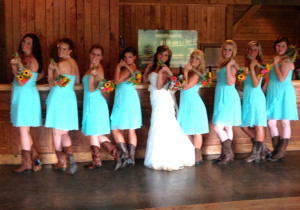
Wedding Traditions & Folklore
asheville, Botanical gardens, bride, celebrant, ceremony, destination, elopement, interfaith, interfaith minister, marriage ceremony, nc wedding, wedding bouquet, wedding cake, wedding gown, wedding tuxedo, wedding veil
Wedding Traditions & Folklore
Many of today’s popular wedding ceremony and reception traditions can be traced to ancient Egyptian and European customs. These were often based on symbolism, superstition, folklore, religion, and even the belief that evil spirits could bring disease and death to newlyweds and crops, which was very important in many farm-based early cultures. Although the exact origin and usefulness of many of these early wedding traditions are not always clear, popular acceptance has allowed them to flourish. Besides, many of these wedding traditions are just plain fun!
According to various sources, some of the early marriages were literally carried out by the Groom and his “Bridesmen” (or “Bridesknights”) who would kidnap a woman (the origin of “carrying a Bride over the threshold”) from another tribe! The Groom and his fellow conspirators would then fight off the female’s family of tribesmen with swords held in their right hand while the Groom would hold the captured Bride in his left hand, which is the origin of why a Bride stands on the left side of the Groom at a wedding.
After a successful capture, another politically correct practice was for the Groom to hide his new Bride for one month for mating purposes. It is said that the word “honeymoon” was created to describe this one month cycle of the moon when they would drink mead, which was a honey sweetened alcoholic brew that effects both sobriety and the acidity of the womb, thus increasing fertility.
Beginning around 1000 A.D., marriages were often nothing more than trading chips used in bartering land, social status, political alliances, or money (no checks or credit cards were accepted) between families!
The word, “Wedding” comes from the Anglo-Saxon word “wedd” that meant a man would marry a woman and pay the Bride’s father.
Bouquet
Wedding bouquets were originally made of such strong herbs as thyme and garlic, which were meant to frighten away evil spirits, and to cover the stench emitting from people who had not bathed recently!
Bouquet Toss
In ancient times, it was believed that a Bride was especially lucky on her wedding day. Guests would sometimes tear at her dress for a souvenir piece of good luck to take home. The Bride’s tossing of her bouquet grew from her desire to offer a good luck souvenir, and prevent guests from bothering her (and her dress!) during her reception.
Bridesmaids
Early Brides and Bridesmaids wore similar dresses in order to confuse evil spirits.
Back in the days when weddings were arranged by family members, it is said that a poor Dutchman fell in love with a girl whose father refused her a dowry. Their friends showered her with enough gifts to help them start a household. According to another story, the first “Bridal Shower” occurred at the end of the 19th century. At a party, the Bride’s friends placed small gifts inside a parasol and opened it over the Bride’s head. When she opened the parasol, she was “showered” with presents!
Bridal Veil
When marriages were arranged by family members, the newlyweds very rarely were allowed to see one another. Family members exchanging a dowry were afraid that if the Groom didn’t like the appearance of the Bride’s face, he might refuse to marry her. This is why the Father of the Bride “gave the Bride away” to the Groom at the actual wedding ceremony. Only after lifting her veil just prior to the ceremony did the Groom see the Bride’s face for the first time! Early Greek and Roman Brides wore red or yellow veils to represent fire, and to ward off demons.
Carrying The Bride Over The Threshold
When a Groom used to steal his Bride from her tribe, he was forced to carry her kicking and screaming. This act of thievery has evolved into a more romantic gesture, welcoming the Bride into her new home.
Garter
Brides originally tossed a garter, rather than a bouquet, at a wedding reception. In the 14th century, this custom changed after Brides became tired of fighting off drunken men who tried to remove the garter themselves! According to one legend, the garter toss in England evolved from an earlier tradition of “flinging the stocking”. On their wedding night, guests would follow the Bride and Groom to their bedroom, wait until they undressed, steal their stockings, and then “fling” them at the couple! The first person to hit the Bride or Groom on the head would supposedly be the next person to marry.
Money Dance
According to one custom, when arranged marriages were common, the Groom collected a dowry only after his marriage was consummated. The money dance insured that the couple would have some money before they left their wedding reception. According to another wedding tradition, the people of the village gave gifts of pottery, livestock, and garden plants to the newlyweds because the Bride and Groom had no money to acquire these items until they had children, after which a dowry was exchanged.
Penny In Shoe
This is a European tradition to bring the Bride good luck, fortune, and protection against want. After the Wedding Day, the lucky penny can be turned into a piece of jewelry as a pendant, charm for a bracelet, or ring setting.
Ring Finger
Prior to the 5th century, the ring finger was actually the index finger. Later, it was believed that the third finger contained the “vein of love” that led directly to the heart.
Shoes On Vehicle
Ancient Romans used to transfer to the Groom his authority over his Bride when her Father gave the Groom her shoes. In later years, guests threw their own shoes at the newlyweds to signify this transfer of authority. Today, this tradition is kept alive by simply tying old shoes to the back of the newlywed’s vehicle before they leave their wedding reception celebration.
Something Old, Something New, Something Borrowed, Something Blue
This superstition of the Bride wearing something that fits each of these four categories originated in Europe to ward off evil spirits. Something Old: This tradition symbolized the sense of continuity while making the transition from a single person to that of a married couple. Something New: This tradition symbolized that marriage represented a transition to adulthood. Something Borrowed: This tradition symbolized the popular belief that by borrowing something from a happily married couple, good fortune would follow the newlyweds. Something Blue: In ancient Israel, blue was the border color of the Bride’s dress, symbolizing purity, constancy and fidelity.
Stag Parties
This is the male equivalent of the Bridal Shower. Roman empire soldiers would feast with the Groom the night before his wedding to say goodbye to his irresponsible days of bachelorhood, and to renew their vows of allegiance to their friendships.
Tossing Rice
By believing that newlyweds brought good luck, guests used to shower them with nuts and grains to insure a bountiful harvest, and many children to work the land. During years of a poor harvest, rice was tossed instead. This tradition continues today with healthier choices for the birds: flower petals, birdseed, bubbles, etc. to wish the Bride and Groom much happiness.
Tuxedo
Until the 20th century, the Groom simply wore his “Sunday best” on his wedding day. It is said that President Teddy Roosevelt popularized the modern tuxedo.
Tying The Knot
This comes from the days of the Roman empire when the Bride wore a girdle that was tied in knots. The Groom untied the knots prior to the consummation of their marriage.
Also during the days of the Roman empire, wedding cakes were baked of wheat or barley. At the reception, they were traditionally broken over the head of the new Bride by the Groom as a symbol of her fertility. Guests would then scramble for pieces of the cake, and take them home for good luck. It later became a tradition to place many small cakes on top of each other as high as possible. The newlyweds would then try to exchange a kiss over the top of the tower of cakes without knocking them down. During the reign of King Charles II of England, the baker added icing, and the modern style of wedding cake was born. It is unclear when the tradition of the newlyweds smashing wedding cake into each other’s face first began, and uncertain if such marriages are consummated later that day or evening!
According to some historians, the first recorded marriage rings date back to the days when early man tied plaited circlets around the Bride’s wrists and ankles to keep her spirit from running away. Approximately 3,000 BC, Egyptians originated the phrase “without beginning, without end” in describing the significance of the wedding ring. These rings were made of woven hemp which constantly wore out and needed replacement. Although Romans originally used iron, gold is now used as a symbol of all that is pure. Diamonds were first used by Italians, who believed that it was created from the flames of love. In some European cultures, the wedding ring is worn on the right hand. In other cultures, an engagement ring is worn on the left hand, and the wedding ring is worn on the right hand.
Wedding Toast
It is said that this tradition first began in France, where bread would be placed in the bottom of two drinking glasses for the newlyweds. They would then drink as fast as they could to be the first person to get to the toast. According to legend, the winner would rule their household!
White Wedding Dress
This was made popular in the 1840’s by Queen Victoria, who chose this instead of the traditional royal “silver” wedding dress. Prior to this, Brides simply wore their best dress on their wedding day.












